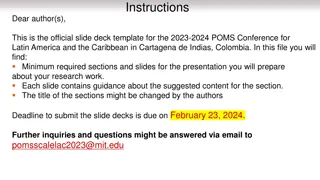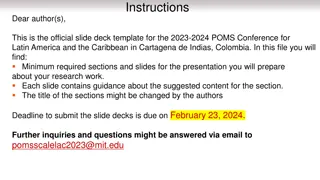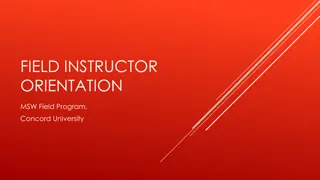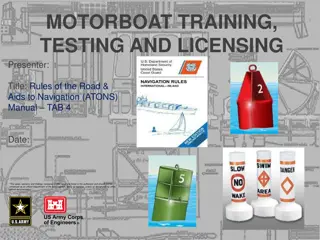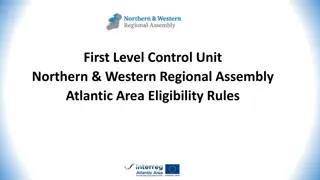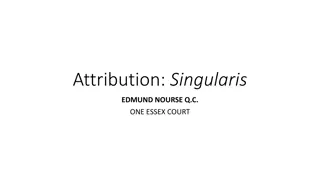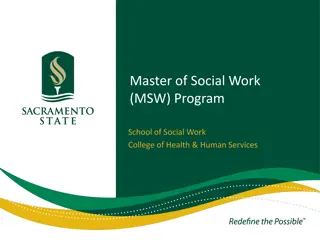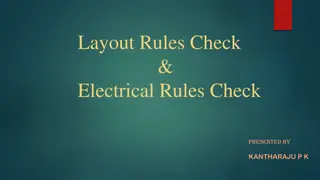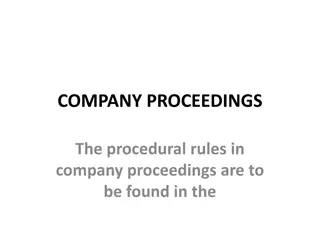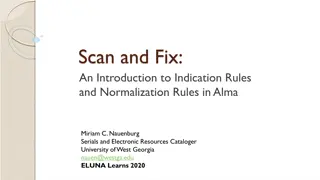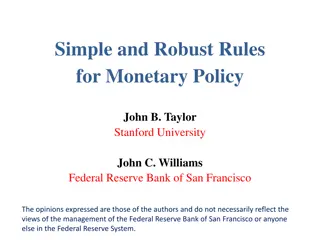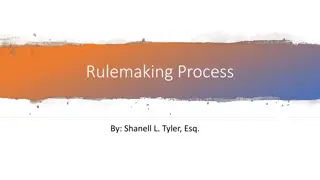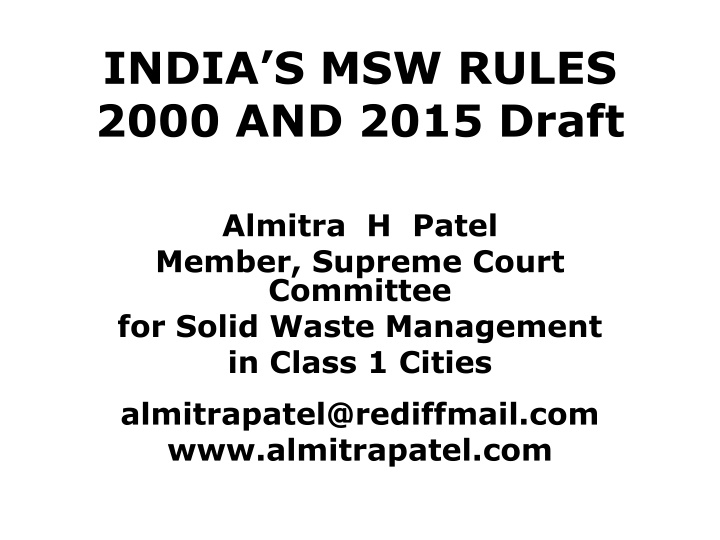
India's Solid Waste Management Rules: Guidelines and Strategies
Learn about India's MSW rules from 2000 and 2015, focusing on minimizing waste to landfills, biological stabilization, separate collection of wet and dry wastes, door-to-door waste collection, and defined duties for waste generators. Explore the innovative methods adopted by India to manage its solid waste effectively.
Download Presentation

Please find below an Image/Link to download the presentation.
The content on the website is provided AS IS for your information and personal use only. It may not be sold, licensed, or shared on other websites without obtaining consent from the author. If you encounter any issues during the download, it is possible that the publisher has removed the file from their server.
You are allowed to download the files provided on this website for personal or commercial use, subject to the condition that they are used lawfully. All files are the property of their respective owners.
The content on the website is provided AS IS for your information and personal use only. It may not be sold, licensed, or shared on other websites without obtaining consent from the author.
E N D
Presentation Transcript
INDIAS MSW RULES 2000 AND 2015 Draft Almitra H Patel Member, Supreme Court Committee for Solid Waste Management in Class 1 Cities almitrapatel@rediffmail.com www.almitrapatel.com
MINIMISE WASTE TO LANDFILL US and Canada are running out of landfills and funds to dump and forget mixed waste. The EU is banning Below-Ground Landfills as even the most scientific ones leak after 30 years, leaving pollution for future generations. India has learnt from their experiences and DOES NOT ALLOW LANDFILLING OF UNPROCESSED MIXED WASTE, with or without soil cover ! 2
BIOLOGICAL STABILISING Wet waste for biological stabilising, and then composting or vermi-composting to return plant nutrients to revitalise our soils as we have done since Vedic times. Or bio-gas (biomethanation) and slurry to land Dry waste for recycling 3
COLLECT AND TRANSPORT WET & DRY WASTES SEPARATELY Different destinations for wet and dry waste: Recyclables to kabadiwalas or collection centres Non-recyclables like snack-food kurkure packs and thermocole shredded for plastic roads Pioneered and promoted by Tamil Nadu, HP Other combustibles to cement plants Inerts for plinth filling or road improvement 4
DOOR-TO-DOOR COLLECTION 2000: Cities to organise house-to-house collection, encourage segregation of wastes and shall promote recycling or reuse of segregated materials . 2015: Duties of waste generators: separately store : Biodegradable or wet waste Non-biodegradable or dry waste [for recycling] Domestic hazardous waste [and sanitary waste] 5
2015: DUTIES DEFINED : Generators : keep wastes unmixed CPCB and SPCBs : enforce rules MOEFCC: monitor their enforcement countrywide thru central monitoring committee and review Rules MoUD: review, guide, provide finance, R&D FertIliser Ministry: incentivise sale of city compost and promote co-marketing of 3-4 bags compost with 6-7 bags chemical fertiliser 6
2015: MORE DUTIES DEFINED State UDs: prepare State policy, SWM strategy in 1 year, including waste-pickers; Minimise waste to landfill thru waste reuse, reduction, recycling, ensure implementation; Decentralised waste processing and also common regional sanitary landfills CDMA: ensure implementation by ULBs DM/DC: provide waste processing and disposal facilities & quarterly review of ULB compliance 7
2015: DUTIES OF ULBs - 1 Prepare SWM Plan in 6 months Frame byelaws for Rules, implement on time Prescribe & collect user fees for sustainability Direct generators to segregate Set up haz-waste deposition centres Set up infrastructure for segregation etc Daily waste collection, fines for littering Street sweeping daily, alt-day or weekly 8
2015: DUTIES OF ULBs - 2 Market waste decentralised mgt incl biometh Horti waste transport to parks and process Sanitary waste to its processing facility Inert waste separate transport and disposal C&D Construction & Demolition waste mgt Easy access to waste-pickers Hazwaste collection centre every 20 sq km Preference to Decentralised biomethanation, vermi-, composting for bio-stabilisation with community support 9
2015: DUTIES OF ULBs - 3 Waste to Energy or RDF only for non- recyclable combustibles to power plants or cement kilns Ensure segregated waste space before approving bldg plans First fund waste processing in budgets Set up sanitary landfills Bioremediate existing old waste dumps Detailed timeframes for compliance criteria 10
2105 : ADDITIONAL ITEMS State Level Advisory Body for SWM New Chapter on Construction & Demolition waste including responsibility of generators, ULBs and standards for recycled products. Minor changes to siting criteria, authorisation and reporting forms, and standards for air, water and compost. 11
DO NOT WAIT !! Act now to try and adopt all the new directions outlined in the draft MSW Rules 2015, esp 32 new responsibilities of ULBs for SWM which is their main and most critical duty. It will give you a head start in compliance as very minor changes are expected in final form. 12


